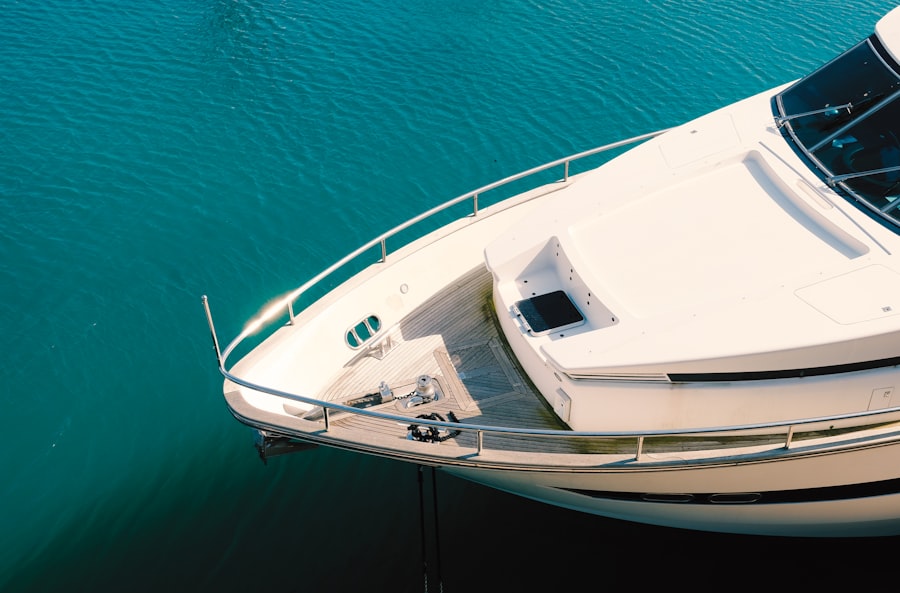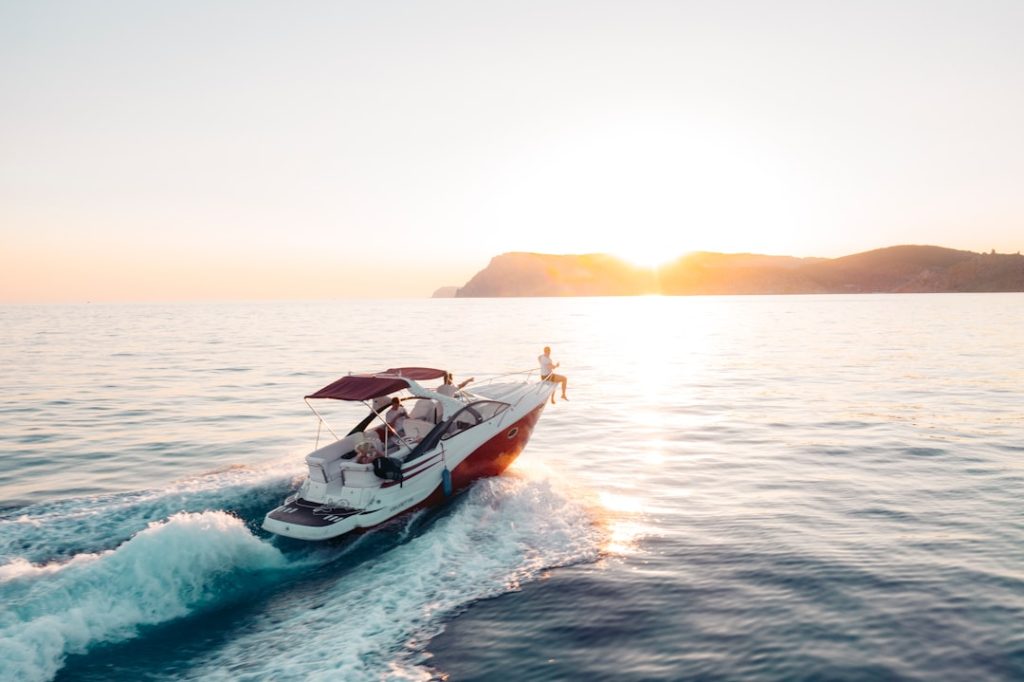When embarking on the journey of yacht ownership, the first step is to gain a clear understanding of your specific needs and desires. This involves a thorough self-assessment of how you intend to use the yacht. Are you looking for a vessel primarily for leisure cruising with family and friends, or do you envision embarking on long-distance voyages?
The purpose of the yacht will significantly influence the type and size of the vessel you should consider. For instance, if your primary goal is to entertain guests, you might prioritize spacious decks and luxurious amenities. Conversely, if you are an avid sailor seeking adventure, a performance-oriented sailing yacht with advanced rigging and hull design may be more suitable.
Additionally, it is essential to consider the number of people who will typically be aboard. A yacht designed for a small family will differ greatly from one intended for larger gatherings or chartering. The layout, number of cabins, and overall capacity should align with your lifestyle and social preferences.
Furthermore, think about the destinations you wish to explore. If you plan to navigate coastal waters, a smaller, more maneuverable yacht may suffice. However, for oceanic adventures, a robust vessel equipped for open seas is crucial.
Understanding these factors will lay a solid foundation for your yacht search.
Key Takeaways
- Clearly define your yacht requirements before starting the search.
- Thoroughly research different yacht models and options available.
- Establish a realistic budget including purchase and ongoing costs.
- Conduct detailed inspections to ensure the yacht’s condition and value.
- Understand registration, insurance, and maintenance responsibilities post-purchase.
Researching Yacht Options
Once you have a clear picture of your needs, the next step is to delve into the myriad of yacht options available in the market. The diversity of yachts can be overwhelming, ranging from sleek motor yachts to elegant sailing vessels, each with its unique characteristics and advantages. Begin by familiarizing yourself with different types of yachts, such as catamarans, monohulls, and powerboats.
Each type offers distinct benefits; for example, catamarans provide stability and spaciousness, making them ideal for families or those who enjoy entertaining. In addition to understanding the types of yachts, it is crucial to research specific brands and models that align with your preferences. Some manufacturers are renowned for their craftsmanship and reliability, while others may be celebrated for innovative designs or luxury features.
Online resources, yacht shows, and forums can provide valuable insights into various models’ performance and user experiences. Engaging with current yacht owners can also yield practical advice and recommendations based on firsthand experiences. This research phase is vital in narrowing down your options and ensuring that you make an informed decision.
Setting Your Budget

Establishing a budget is a critical step in the yacht purchasing process that goes beyond just the initial purchase price. While it is essential to determine how much you are willing to spend on the yacht itself, it is equally important to account for additional costs associated with ownership. These can include registration fees, insurance premiums, maintenance expenses, docking fees, and fuel costs.
A comprehensive budget will help you avoid financial strain in the long run and ensure that you can enjoy your yacht without unexpected financial burdens. When setting your budget, consider not only your current financial situation but also your long-term financial goals. It may be tempting to stretch your budget for a dream yacht, but it is wise to remain realistic about what you can afford without compromising your financial stability.
Additionally, consider whether you might want to finance your purchase through loans or leasing options. Understanding interest rates and loan terms can significantly impact your overall expenditure. By carefully evaluating your budget and financial options, you can make a well-informed decision that aligns with both your desires and financial capabilities.
Inspecting Yachts
| Inspection Area | Key Metrics | Typical Issues Found | Recommended Action |
|---|---|---|---|
| Hull Condition | Cracks, Blisters, Delamination | Gelcoat cracks, Osmotic blisters | Repair gelcoat, Treat blisters |
| Engine Performance | Hours Run, Oil Pressure, Temperature | Oil leaks, Overheating, Low compression | Service engine, Replace seals, Tune-up |
| Electrical Systems | Battery Voltage, Wiring Integrity | Corroded connections, Dead batteries | Clean terminals, Replace batteries |
| Safety Equipment | Life Jackets, Fire Extinguishers, Flares | Expired flares, Damaged jackets | Replace expired items, Inspect gear |
| Deck and Rigging | Wear and Tear, Tension, Corrosion | Frayed lines, Rusted fittings | Replace lines, Lubricate fittings |
| Plumbing Systems | Water Pressure, Leak Detection | Leaking hoses, Clogged pumps | Repair leaks, Clean pumps |
Once you have narrowed down your options and set a budget, the next crucial step is inspecting potential yachts. This process is not merely about checking off boxes on a list; it requires a keen eye for detail and an understanding of what to look for in a quality vessel. When inspecting a yacht, start with the exterior condition—examine the hull for any signs of damage or wear, such as blisters or cracks that could indicate underlying issues.
Pay attention to the deck’s condition as well; it should be free from significant wear and tear. Moving inside, assess the interior layout and amenities. Ensure that the living spaces meet your needs in terms of comfort and functionality.
Check the condition of the galley (kitchen), bathrooms, and sleeping quarters. Look for signs of water damage or mold, which could indicate poor maintenance or leaks. It is also advisable to inspect the engine and mechanical systems thoroughly; if you are not mechanically inclined, consider hiring a marine surveyor who can provide an expert evaluation of the yacht’s condition.
This professional assessment can save you from costly repairs down the line and give you peace of mind about your investment.
Negotiating the Purchase
Negotiating the purchase of a yacht can be one of the most daunting aspects of the buying process, yet it is also where significant savings can be realized if approached strategically. Start by gathering as much information as possible about the yacht’s market value; this includes researching similar models’ sale prices and understanding any unique features that may affect its value. Armed with this knowledge, you can enter negotiations with confidence.
When making an offer, be prepared to justify your price based on your research findings and any issues identified during inspections. It is common for sellers to have an emotional attachment to their vessels, which can complicate negotiations; therefore, maintaining a respectful yet firm stance is crucial. Be open to counteroffers but know your limits—having a predetermined maximum price will help you avoid overextending yourself financially.
Additionally, consider including contingencies in your offer related to inspections or financing; this can provide an extra layer of protection during the negotiation process.
Understanding Yacht Ownership Costs

Owning a yacht entails more than just the initial purchase price; it involves ongoing costs that must be factored into your overall budget. These ownership costs can vary significantly based on factors such as the size of the yacht, its age, and how often it will be used. Common expenses include docking fees at marinas or boatyards, which can range from hundreds to thousands of dollars annually depending on location and amenities offered.
Maintenance is another critical aspect of yacht ownership costs that cannot be overlooked. Regular upkeep is essential to ensure safety and longevity; this includes routine engine checks, hull cleaning, and servicing of onboard systems such as plumbing and electrical components. Depending on the size and complexity of your yacht, maintenance costs can add up quickly—some estimates suggest budgeting around 10% of the yacht’s value annually for maintenance alone.
Additionally, insurance premiums should be factored into your budget; these costs can vary based on coverage levels and the yacht’s intended use but are essential for protecting your investment.
Registering and Insuring Your Yacht
Once you have successfully negotiated the purchase of your yacht, registering it properly is essential to ensure compliance with local laws and regulations. The registration process typically involves submitting documentation that proves ownership along with any necessary fees to the appropriate maritime authority in your country or state. Depending on where you live, there may be specific requirements regarding safety equipment or inspections before registration is granted.
Insurance is another critical component of yacht ownership that should not be overlooked. Yacht insurance policies can vary widely in terms of coverage options; some may cover only basic liability while others include comprehensive protection against theft, damage, or accidents at sea. When selecting an insurance policy, consider factors such as how often you plan to use the yacht, where it will be docked, and whether you intend to charter it out to others.
Consulting with an insurance broker who specializes in marine insurance can help you navigate these options effectively.
Maintaining Your Yacht
The final aspect of yacht ownership involves ongoing maintenance to ensure that your vessel remains in optimal condition throughout its lifespan. Regular maintenance not only preserves the aesthetic appeal of your yacht but also enhances its performance and safety on the water. Establishing a routine maintenance schedule is crucial; this should include tasks such as cleaning the hull regularly to prevent barnacle growth and checking all mechanical systems before each outing.
In addition to routine maintenance tasks, it is wise to keep detailed records of all repairs and services performed on your yacht. This documentation can be invaluable when it comes time to sell or trade in your vessel, as potential buyers will appreciate knowing that the yacht has been well cared for over time. Furthermore, staying informed about best practices in yacht maintenance—such as seasonal preparations for winter storage or tropical storm readiness—can help protect your investment from unforeseen damage or deterioration.
By understanding these various aspects of yacht ownership—from assessing personal needs to navigating costs and maintenance—you can embark on this exciting journey with confidence and clarity.


